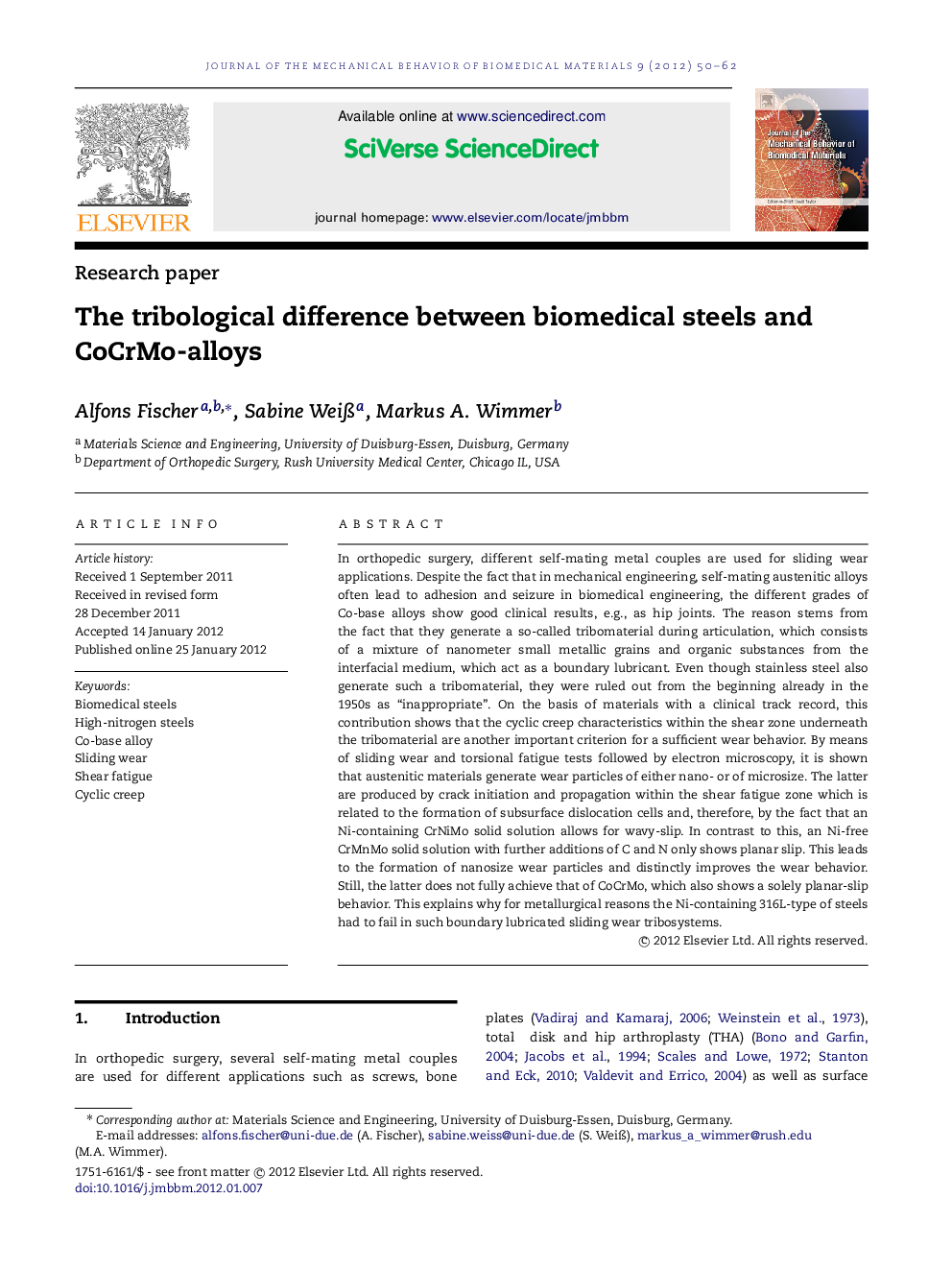| کد مقاله | کد نشریه | سال انتشار | مقاله انگلیسی | نسخه تمام متن |
|---|---|---|---|---|
| 811108 | 1469136 | 2012 | 13 صفحه PDF | دانلود رایگان |

In orthopedic surgery, different self-mating metal couples are used for sliding wear applications. Despite the fact that in mechanical engineering, self-mating austenitic alloys often lead to adhesion and seizure in biomedical engineering, the different grades of Co-base alloys show good clinical results, e.g., as hip joints. The reason stems from the fact that they generate a so-called tribomaterial during articulation, which consists of a mixture of nanometer small metallic grains and organic substances from the interfacial medium, which act as a boundary lubricant. Even though stainless steel also generate such a tribomaterial, they were ruled out from the beginning already in the 1950s as “inappropriate”. On the basis of materials with a clinical track record, this contribution shows that the cyclic creep characteristics within the shear zone underneath the tribomaterial are another important criterion for a sufficient wear behavior. By means of sliding wear and torsional fatigue tests followed by electron microscopy, it is shown that austenitic materials generate wear particles of either nano- or of microsize. The latter are produced by crack initiation and propagation within the shear fatigue zone which is related to the formation of subsurface dislocation cells and, therefore, by the fact that an Ni-containing CrNiMo solid solution allows for wavy-slip. In contrast to this, an Ni-free CrMnMo solid solution with further additions of C and N only shows planar slip. This leads to the formation of nanosize wear particles and distinctly improves the wear behavior. Still, the latter does not fully achieve that of CoCrMo, which also shows a solely planar-slip behavior. This explains why for metallurgical reasons the Ni-containing 316L-type of steels had to fail in such boundary lubricated sliding wear tribosystems.
Journal: Journal of the Mechanical Behavior of Biomedical Materials - Volume 9, May 2012, Pages 50–62